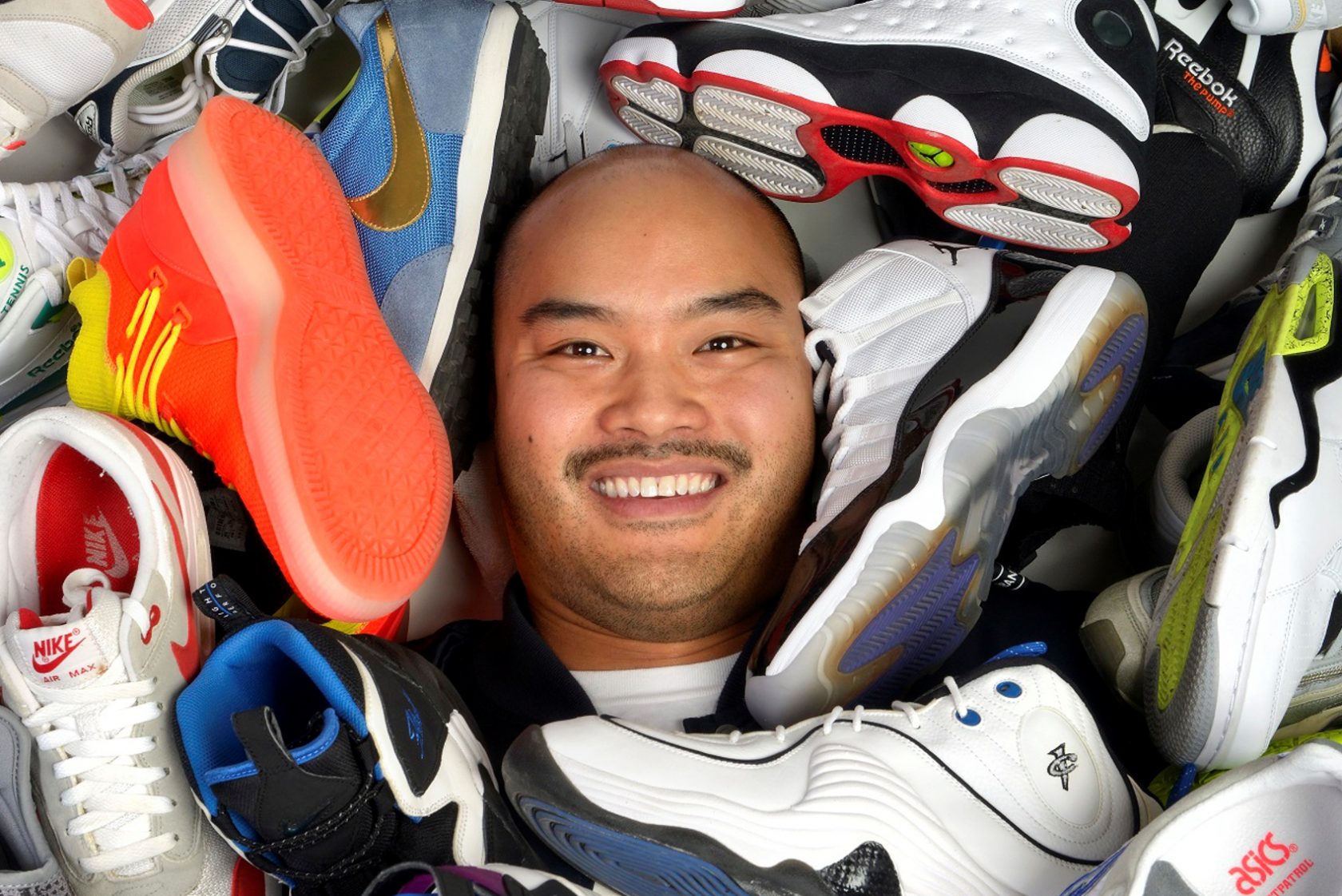
On a recent Sunday afternoon, before the first snowfall, my wife Karli and I were driving with our two daughters on Lewvan Drive in Regina. We approached a red light where a 1970s muscle car was already stopped in front of us: a blue Chevelle SS. It was in mint condition, the tires a glossy black, and the chrome polished. I could see the man driving it had grey hair. He looked about my dad’s age, in his early 60s. I couldn’t yet see his face, but I turned to my wife and said, “The way that guy feels right now, sitting in his car is how I feel when I go in the basement, pull out one of my favourite pairs of Jordans, and put them on my feet.” Karli laughed.
She understood immediately. This is what it means to be a sneakerhead.
It’s not just that I have a lot of sneakers — Air Jordans, tennis shoes, running shoes, cross-trainers and the like — it’s that collecting them, and taking good care of them and lacing up a given pair for a cruise around town makes me feel a certain way. I feel good. I feel blessed. I get to flex¹. But where did this desire to flex come from? How long have I felt this way?
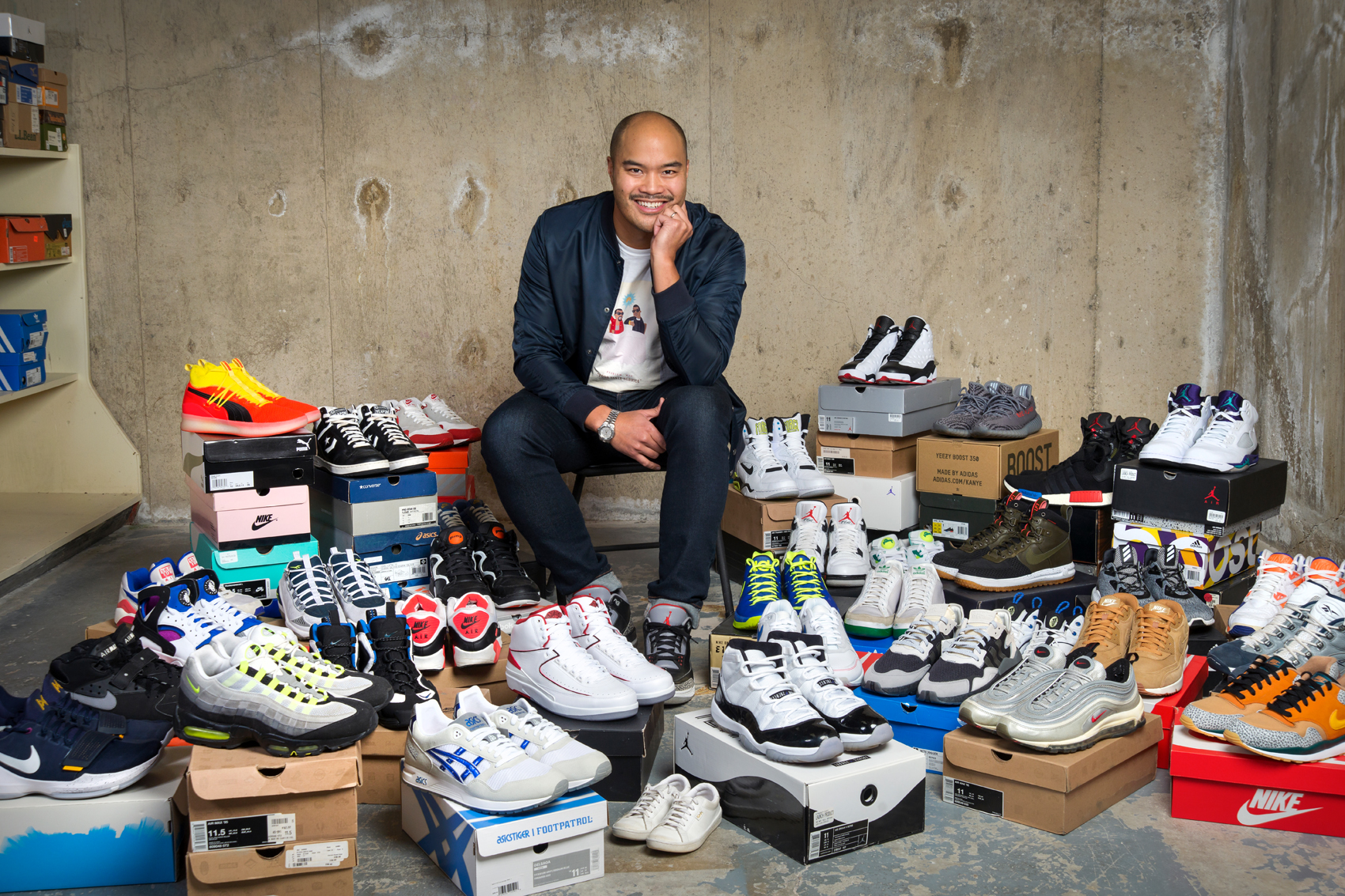
As long as I can remember, to be honest.
Excuse me if this sounds familiar. It’s back to school time and you’re excited to head to class, see your friends again, and to tell them about your summer vacation. You’re also excited to buy new school supplies with your parents or maybe just your mom — it was always mom who shopped for school supplies with me). You got new Laurentien pencil crayons, UHU glue sticks, Hilroy notebooks, Staedtler white erasers. Did you care about which brand of school supplies you got? Maybe you didn’t. But I sure did.
And I cared about what brand of gym shoes I got every fall. When I was six or seven, I didn’t care what brand of T-shirt, jacket or sweatpants I was wearing. Ok, I should confess: I did care what brand of sweatpants I was wearing. I wanted Converse. And my mom bought me “Converted” ones, with a diamond where the Converse pants had a star — they were knockoffs, and I was ashamed of them.
Frankly, I would wear generic sweatpants. Those were fine. I wouldn’t care about brand name apparel until I was in Grade 6 — which is when I started caring about what girls thought about me and how I looked. Before that, I only cared about sports.
And if you were into sports in the late ’80s and early ’90s, you were likely into shoes. I wanted cool ones. I wanted the ones the pro athletes wore. In 1987, going into Grade 2, I wanted the O.G.² Nike Air Trainers, the ones Bo Jackson wore. But my mom said, “No, you’re seven years old. Those are too expensive.” And she bought me the Lynx-brand knockoffs of the Air Trainers.
“One day,” I thought to my 7-year-old self, “I’ll buy those Air Trainers.”
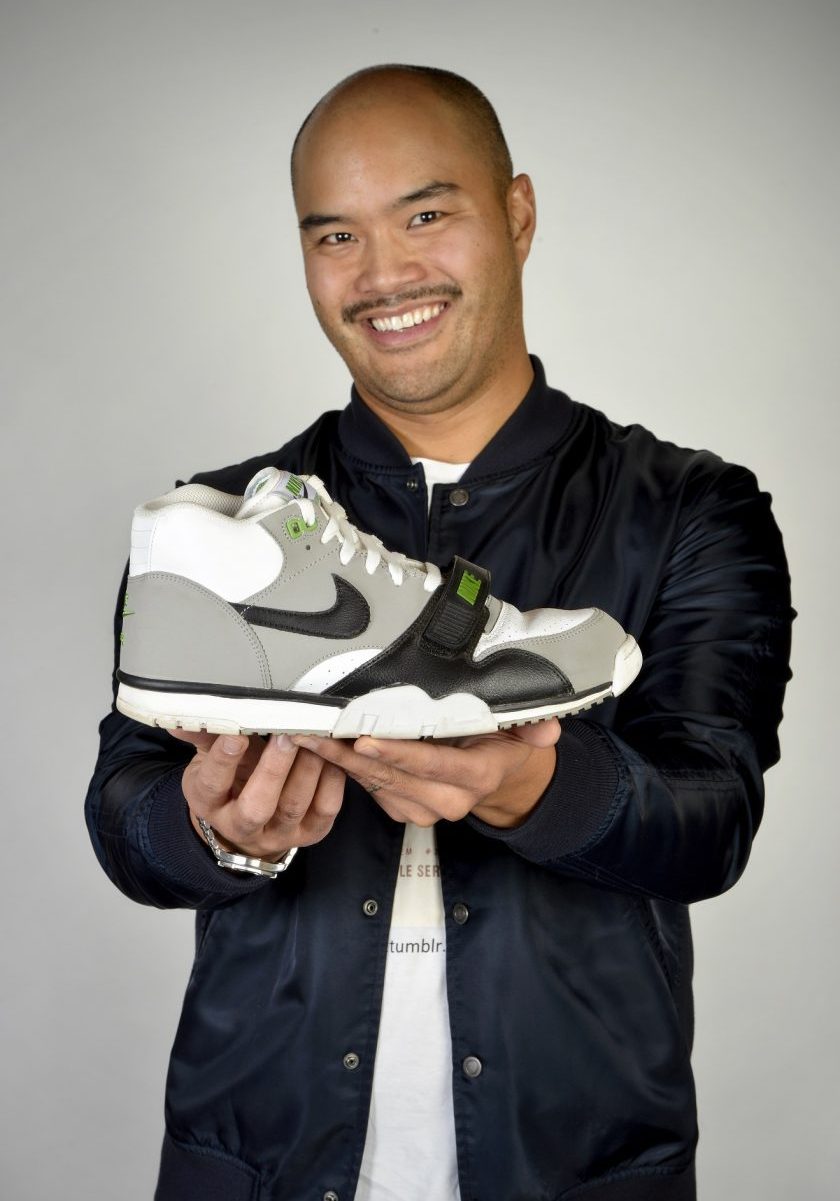
Fast-forward to Grade 6. It was my first year of caring about my appearance and, coincidentally, of playing organized basketball. I was all about Nike. My favourite player was David Robinson. My dad, also a basketball player, wore David Robinson Nike pumps inflatable basketball shoes) to play men’s league. I begged and pleaded with him for a pair just like his. To my surprise and delight, he capitulated.
Thus, a new ritual was born: instead of new gym shoes every fall, it was new basketball shoes every fall. It was also a golden age for getting new basketball shoes. The reigning NBA MVP in 1992 was a player named Michael Jordan. All the kids and I wanted to be like Mike. Well, I wanted to be like David Robinson and Mike. But you get the picture.
Jordan and Nike were beginning to change the way sneakers were marketed. The shoes weren’t just shoes. They were an embodiment of Jordan’s personality and his performance on the court — he was the most electrifying and dominant player of his generation, and arguably of all time. His shoes were an “image” and they still are to this day.
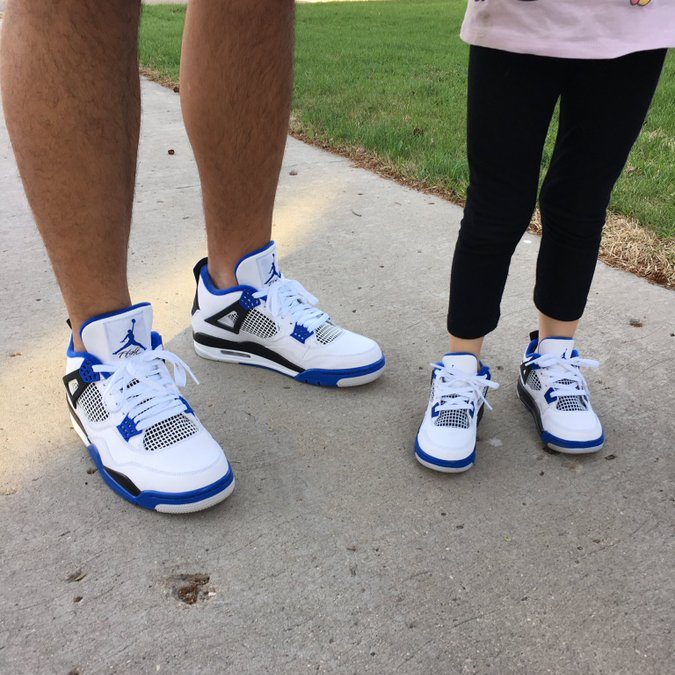
The ritual of getting the coolest basketball shoes my parents could afford repeated itself each year until I got my first full-time summer job, the summer after graduating high school. Because I still lived at home, I had more disposable cash than ever. What do you think I spent my money on? Sneakers, yes. But what else?
I was very much into music and, bear in mind this was 1998, and the first iPod wouldn’t hit the market until 2001. I bought a lot of sneakers and CDs…and beer.
During this period of the late ’90s/early 2000s, a couple of things coincided with my Summer cash windfall. One, sneaker manufacturers were reissuing classic shoes. They had done this for some time, particularly with popular Air Jordan models from years past. But I can think of two pairs I went out of my way to buy: the 2001 retro3 of the “Black Cement” Air Jordan³ and the 2003 retro of the black Converse Weapon worn by Larry Bird in the early ’80s. I didn’t have to line up to buy these shoes; I just walked into the store and bought them. It was amazing to me.
"A lot has changed in the sneaker game since the Golden Age of the ’80s and ’90s. The internet and social media have, in my opinion, been both a blessing and a curse to sneakerheads like me."
Secondly, I reached an inflection point in my sneaker collection, which was now numbering in the teens. I had enough pairs of shoes that I could rotate them and keep them looking fresh and new. If you accumulate enough shoes that you never wear them into the ground, then you’ve become a collector. Sort of like that Chevelle driver on the Lewvan — he doesn’t need that car to get around. He just takes it out of storage and polishes it every once in a while when he wants to enjoy it.
In spite of working over the summers, I had to get my first student loan in the fall of 2002 to pay for University tuition and books. Prior to that, I’d been fortunate to use a scholarship trust fund my parents had saved up for me. My dad accompanied me to the bank to co-sign my student loan. At the start of that meeting, our loan officer asked me if I had any assets to declare.
“Assets?” I asked.
“Yes, like a car, or perhaps some property you own, which we can use as collateral on this student loan,” she replied.
“Oh…no I don’t have anything like that.”
My dad quickly interjected, “Ask him if he has any shoes or CDs…” The loan officer blushed. The meeting continued and went well. I was approved for the loan. As we were leaving, she pulled us aside and said, “I’ve never heard about shoes or CDs as an asset! Thanks for the funniest loan meeting I’ve ever had.” We all laughed. My dad has a natural sense of humour.
On one hand, major sneaker drops4 are more accessible to buyers in smaller markets like Regina) via online storefronts and drop info posted to social media. On the other hand, demand for rare sneakers from hypebeasts5 the world over has reached unseen levels, amplifying product scarcity, introducing the use of bots6 and creating a reseller market that inflates the price of a sneaker several hundred dollars, or in some cases, even into the thousands.
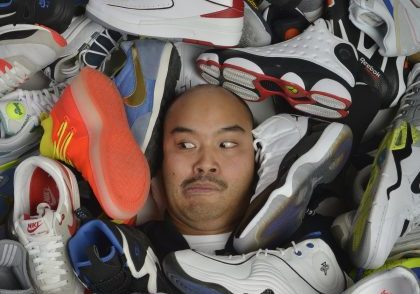
Sneaker reselling has become so lucrative that websites like StockX, Flight Club and GOAT were created just to connect buyers with resellers on a broad scale — private sales that used to take place in a section of eBay, Craigslist and Varage Sale are front and centre on sneaker-only websites.
Sneaker culture and streetwear have also climbed the ranks of society and high fashion. Whereas athletic footwear was mostly worn by jocks, skateboarders and rappers 35 years ago, nowadays rappers and DJs like Kanye West and Virgil Abloh are among the most influential fashion designers and tastemakers in Paris and Milan.
This convergence of style and comfort has raised the profile of the once-humble sneaker, and as a result, the sneaker market is larger than ever. Because reselling has become such big business — many resellers do it full-time and make a good living — the ability for an old sneakerhead like me to casually walk into a Foot Locker and buy a pair of Black Cement Air Jordan 3’s like I did back in 2001) has gone extinct. A re-release of a coveted shoe like this one sells out online and in stores where sneakerheads line up, in some cases overnight) in minutes. So much of one’s ability to cop7 a pair for its retail price online depends on pure luck. Millions are content with paying high resale prices for sneakers like these, but I am stubborn and have yet to do so. I say “yet” because sometimes it feels like it’s only a matter of time. Still, my passion for sneakers burns as strong as ever.
"This is my life…and sneakers are a big part of it."
One of the biggest reasons I don’t shell out several hundred dollars for a pair of rare sneakers is because I’m a dad. I recently told a fellow sneakerhead buddy of mine that I couldn’t buy a pair of $260 retail price) shoes because I need to put my two girls through college. I was only half joking. It’s also a bit ironic to think back on my student loans and the role sneakers had on my need to get these loans.)
That doesn’t mean that I haven’t spent $260 on shoes since having kids. I have. But I pick my spots. It has to be the right pair. It has to be something I’ve always wanted, something nostalgic. Or if it’s a modern design, it has to add something to my collection, which is currently somewhere between 80 and 90 pairs. I don’t want to buy too many shoes that look alike, for example. And I definitely want to keep up with the latest shoe technology.
And like everyone else, I have a mortgage, bills to pay, and I need to save up for my retirement. Once in a while, I’ll treat myself to a new pair of shoes.
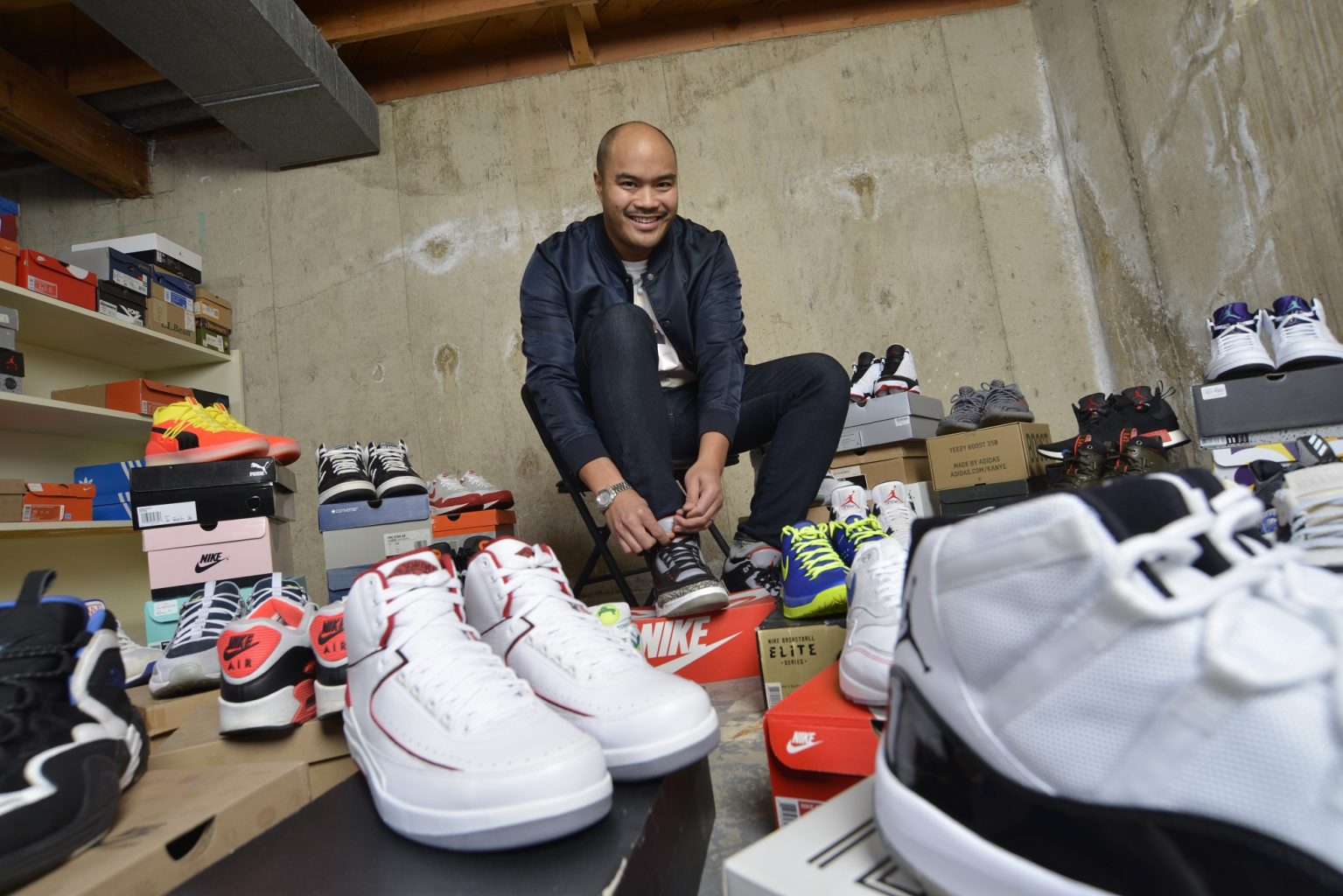
A few weeks ago, for instance, I bought the latest Air Jordans: the Air Jordan 34. Nike called them a new standard in performance and design. I still play pick-up basketball once a week with my friends and I was excited to try these new shoes out on the court. This excitement was always what drew me to sneakers, even from a young age — the excitement for better performance technology and an original look.
The latter implies that sneakers are more than sports equipment. They are a form of self-expression. As a dad, the sneakers you buy your kids reflect your taste as well. I don’t go out of my way to match my daughters’ sneakers, but I’ve done it once. And I gotta admit, I underestimated the delight I would feel the first time my eldest daughter and I wore matching sneakers. It was the look on her face that made it. She was so proud to dress like daddy.
As I reflect on what I appreciate about sneakers, it’s mostly about emotional connections. It’s how they make me feel. I can tell you a story about every pair in my collection. The places I’ve travelled. The experiences I’ve had. Whether it was the pair I brought back from the Philippines, or the pair I wore on a family trip to Disneyland, or the pair I bought on our honeymoon in France, each pair takes me back to a time and a place.
This is my life…and sneakers are a big part of it.
Sneakerhead lingo:
1 Flex: To display or stand tall with pride. It’s not always ostentatious; sometimes a flex is subtle, or a “low-key flex.”
2 O.G.: Original Gangsta — the first edition of a given sneaker.
3 Retro: A reissued pair of classic sneakers, marketed years later as a tribute to the O.G.
4 Drop: A much-anticipated release of a given sneaker, either of a retro or a heavily hyped new model.
5 Hypebeast: A sneakerhead who follows all the hottest trends and product releases; one who buys into all the “hype.”
6 Bots: Software designed to buy up multiple pairs of a rare sneaker model and circumvent a website’s maximum one-pair-per-customer policy.
7 Cop: To purchase or obtain a pair of sneakers.

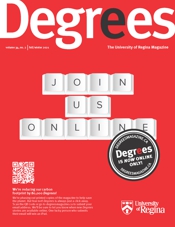

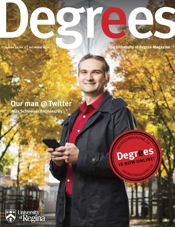
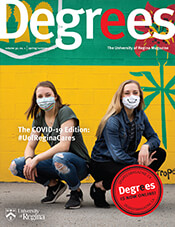
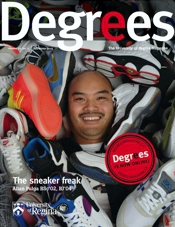


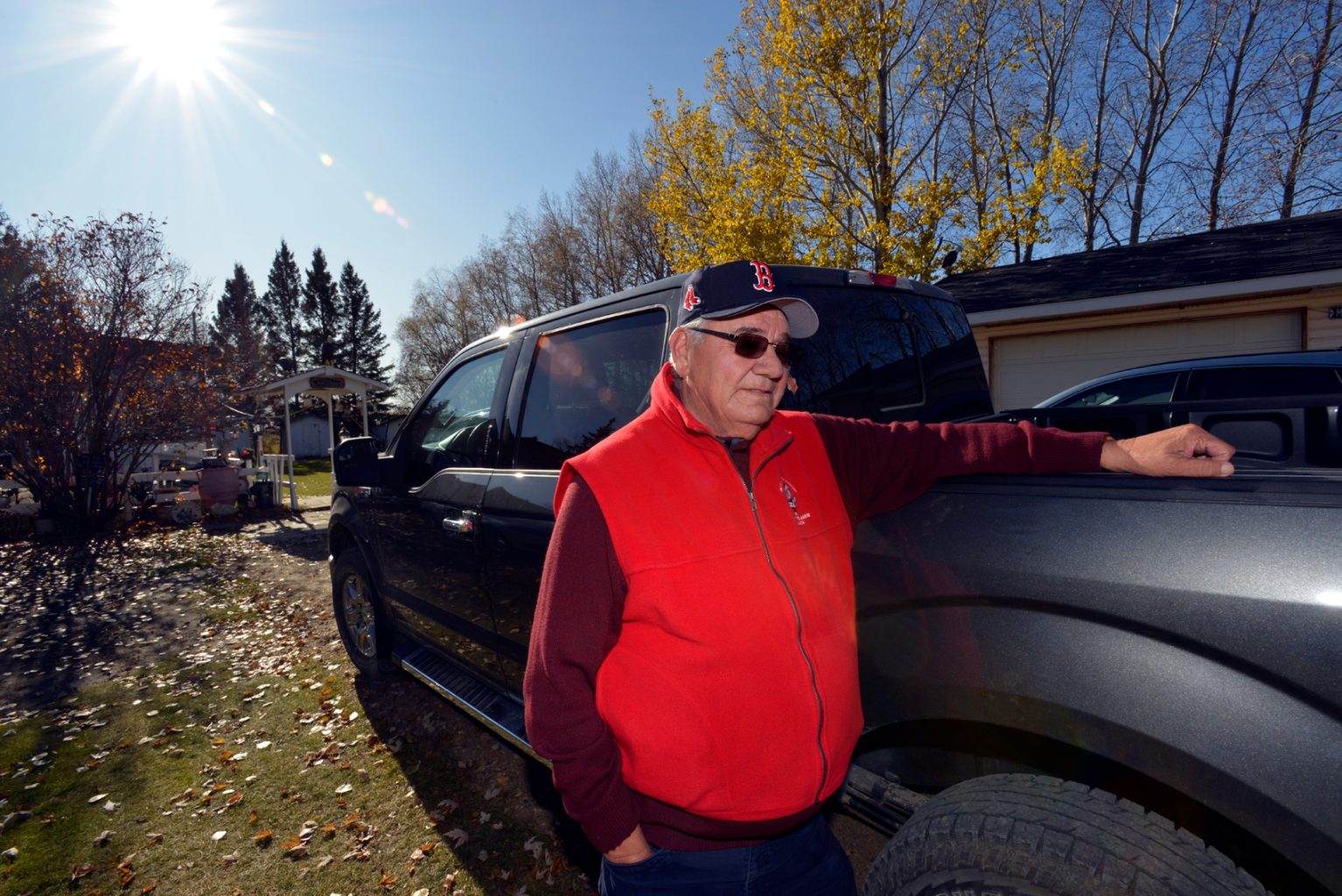 Ted Quewezance, a former chief of Keeseekoose First Nation, near Kamsack, Saskatchewan has seen his community plunge into the depths of despair because of a health crisis. In 2016, there were 100 drug-related deaths. On February 27, 2016, there were four deaths on Cote First Nation alone. Photo by Don Hall
In early 2016, Quewezance was one of the leaders of the Saulteaux Pelly Agency Chiefs Health Alliance (consisting of Keeseekoose, Cote and Key First Nations) that declared their communities in a major state of crisis. Located some 20 kilometres north of Kamsack, Saskatchewan, the three First Nations have been plagued by hundreds of deaths attributed to addictions, violence and health problems. In the year surrounding the crisis declaration, Quewezance said he was attending three or four funerals each week, one of which was his son’s.
Ted Quewezance, a former chief of Keeseekoose First Nation, near Kamsack, Saskatchewan has seen his community plunge into the depths of despair because of a health crisis. In 2016, there were 100 drug-related deaths. On February 27, 2016, there were four deaths on Cote First Nation alone. Photo by Don Hall
In early 2016, Quewezance was one of the leaders of the Saulteaux Pelly Agency Chiefs Health Alliance (consisting of Keeseekoose, Cote and Key First Nations) that declared their communities in a major state of crisis. Located some 20 kilometres north of Kamsack, Saskatchewan, the three First Nations have been plagued by hundreds of deaths attributed to addictions, violence and health problems. In the year surrounding the crisis declaration, Quewezance said he was attending three or four funerals each week, one of which was his son’s.
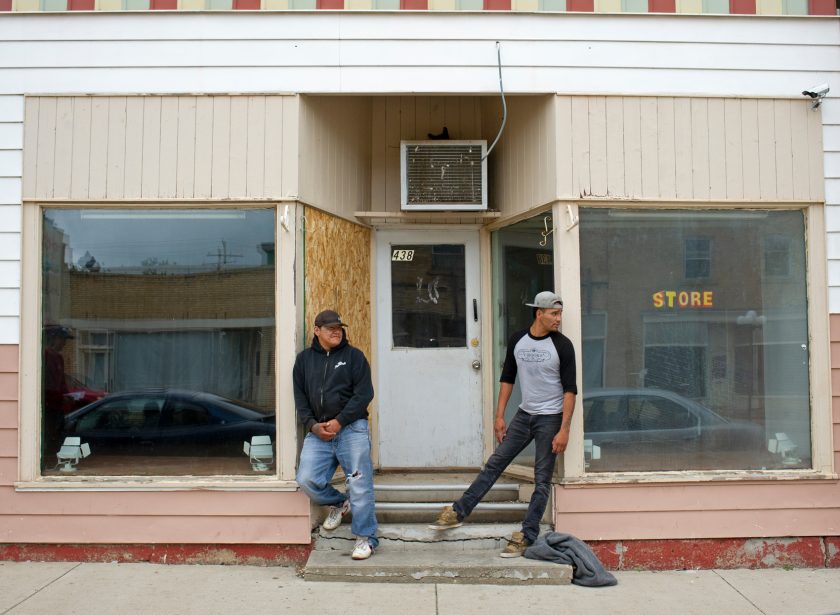 In summer 2018, Ian Musqua (left) and his friend Adrian Severight wait for a methadone clinic to open in Kamsack, Saskatchewan. As early as 2013, patients claimed a Kamsack doctor was over-prescribing opioids. The same doctor operated the methadone program, an opioid addiction treatment. In 2018, the doctor was charged with unprofessional conduct by the College of Physicians and Surgeons of Saskatchewan. He retired later that year. Photo by Mark Taylor
“A lot of the issues in Indigenous health actually aren’t unique, they are just magnified,” he explains. “The system is multi-level and fragmented. In general, stakeholders aren’t directly accountable to each other. This is much worse for Indigenous health.” Lafontaine works relentlessly with medical professionals, health care organizations, and Indigenous communities to drive change in funding and practices at the provincial and federal levels. Improvement, he says, is dependent on four pillars — clear communication, strong engagement, targeted intervention, and cultural transformation.
In 2013, Lafontaine found himself helping Saskatchewan First Nations figure out why their community members were so sick. He recognized the gap in safety, quality improvement and patient-centred care between Indigenous and non-Indigenous patients.
In response to the Truth and Reconciliation Commission’s calls to action for health, the Indigenous Health Alliance was formed with a mission to eliminate the differences in quality of care between Indigenous and non-Indigenous Canadians. As project chair, Lafontaine drafted and helped lead a national strategy representing more than 150 First Nations organizations and several national health agencies. The strategy was submitted to the federal government on behalf of First Nations to advance health transformation. Last fall, the federal government committed $68 million to the project and, with that money in place, Lafontaine proudly stepped back to ensure that implementation was led by First Nations.
In summer 2018, Ian Musqua (left) and his friend Adrian Severight wait for a methadone clinic to open in Kamsack, Saskatchewan. As early as 2013, patients claimed a Kamsack doctor was over-prescribing opioids. The same doctor operated the methadone program, an opioid addiction treatment. In 2018, the doctor was charged with unprofessional conduct by the College of Physicians and Surgeons of Saskatchewan. He retired later that year. Photo by Mark Taylor
“A lot of the issues in Indigenous health actually aren’t unique, they are just magnified,” he explains. “The system is multi-level and fragmented. In general, stakeholders aren’t directly accountable to each other. This is much worse for Indigenous health.” Lafontaine works relentlessly with medical professionals, health care organizations, and Indigenous communities to drive change in funding and practices at the provincial and federal levels. Improvement, he says, is dependent on four pillars — clear communication, strong engagement, targeted intervention, and cultural transformation.
In 2013, Lafontaine found himself helping Saskatchewan First Nations figure out why their community members were so sick. He recognized the gap in safety, quality improvement and patient-centred care between Indigenous and non-Indigenous patients.
In response to the Truth and Reconciliation Commission’s calls to action for health, the Indigenous Health Alliance was formed with a mission to eliminate the differences in quality of care between Indigenous and non-Indigenous Canadians. As project chair, Lafontaine drafted and helped lead a national strategy representing more than 150 First Nations organizations and several national health agencies. The strategy was submitted to the federal government on behalf of First Nations to advance health transformation. Last fall, the federal government committed $68 million to the project and, with that money in place, Lafontaine proudly stepped back to ensure that implementation was led by First Nations.
 Lafontaine speaks at the 2017 Public Policy Forum Testimonial Dinner and Awards. He received the Emerging Leader Award. Photo courtesy of the Public Policy Forum
Earlier this year, Lafontaine received the Sir Charles Tupper Award for Political Action for demonstrating leadership, commitment, and dedication in advancing Canadian Medical Association goals and policies through grassroots advocacy. He was the recipient of the 2017 Emerging Leader Award at the 2017 Public Policy Forum Testimonial Dinner and Awards, an award presented by Prime Minister Justin Trudeau.
Earlier this year, Lafontaine received the Sir Charles Tupper Award for Political Action for demonstrating leadership, commitment, and dedication in advancing Canadian Medical Association goals and policies through grassroots advocacy. He was the recipient of the 2017 Emerging Leader Award at the 2017 Public Policy Forum Testimonial Dinner and Awards, an award presented by Prime Minister Justin Trudeau.
He is the first Indigenous physician listed by Medical Post as one of Canada's 50 Most Powerful Doctors. In 2016, he won the Great Canadian Healthcare Debate at the National Health Leadership Conference organized by HealthCareCAN. In 2015, he was selected a recipient of the Canadian Medical Association’s Award for Young Leaders.
In 2008, during his anesthesia fellowship, Lafontaine became CBC’s “Canada’s Next Great Prime Minister.” He won the competition with a platform focused on reconciling the Treaty relationship between Canada’s Indigenous Peoples and other Canadians.
Lafontaine speaks at the 2017 Public Policy Forum Testimonial Dinner and Awards. He received the Emerging Leader Award. Photo courtesy of the Public Policy Forum
Earlier this year, Lafontaine received the Sir Charles Tupper Award for Political Action for demonstrating leadership, commitment, and dedication in advancing Canadian Medical Association goals and policies through grassroots advocacy. He was the recipient of the 2017 Emerging Leader Award at the 2017 Public Policy Forum Testimonial Dinner and Awards, an award presented by Prime Minister Justin Trudeau.
Earlier this year, Lafontaine received the Sir Charles Tupper Award for Political Action for demonstrating leadership, commitment, and dedication in advancing Canadian Medical Association goals and policies through grassroots advocacy. He was the recipient of the 2017 Emerging Leader Award at the 2017 Public Policy Forum Testimonial Dinner and Awards, an award presented by Prime Minister Justin Trudeau.
He is the first Indigenous physician listed by Medical Post as one of Canada's 50 Most Powerful Doctors. In 2016, he won the Great Canadian Healthcare Debate at the National Health Leadership Conference organized by HealthCareCAN. In 2015, he was selected a recipient of the Canadian Medical Association’s Award for Young Leaders.
In 2008, during his anesthesia fellowship, Lafontaine became CBC’s “Canada’s Next Great Prime Minister.” He won the competition with a platform focused on reconciling the Treaty relationship between Canada’s Indigenous Peoples and other Canadians.
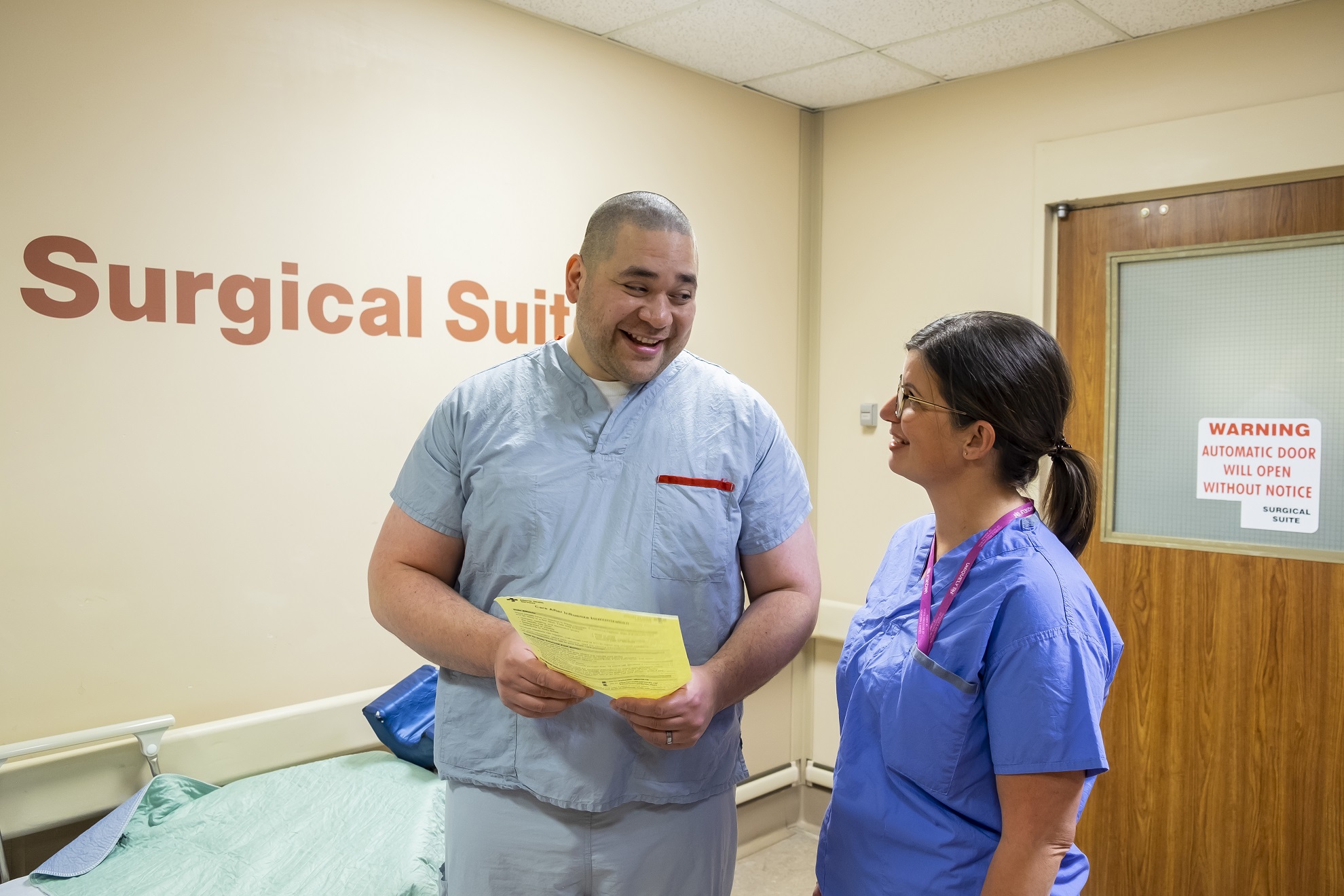 Lafontaine says of his advocacy, “It is very fulfilling. I’m working with patients, colleagues, and other professionals who are also trying to make a difference.” Photo by Randy Vanderveen
“The advocacy has been a natural evolution of growing up the way that I did and having the opportunities that I was given,” Lafontaine says. “Any Indigenous person who gets involved in the health field has the opportunity to have some sort of impact, partially because there are not a lot of us out there, partially because the need is so deep. It is very fulfilling. I’m working with patients, colleagues, and other professionals who are also trying to make a difference.”
Recognizing the importance of patients telling their stories, Lafontaine is developing a virtual platform for physicians, health systems, and Indigenous patients to understand each other’s perspectives and to openly tackle issues like discrimination and racism. The platform, SafeSpaces, was used in the Indigenous Health Alliance to capture patient experiences across Saskatchewan, Northern Manitoba, and Northern Ontario.
Lafontaine’s list of awards and accomplishments is anything but short. Not bad for someone who, in grade school, was labelled as developmentally delayed and consequently homeschooled.
Lafontaine says of his advocacy, “It is very fulfilling. I’m working with patients, colleagues, and other professionals who are also trying to make a difference.” Photo by Randy Vanderveen
“The advocacy has been a natural evolution of growing up the way that I did and having the opportunities that I was given,” Lafontaine says. “Any Indigenous person who gets involved in the health field has the opportunity to have some sort of impact, partially because there are not a lot of us out there, partially because the need is so deep. It is very fulfilling. I’m working with patients, colleagues, and other professionals who are also trying to make a difference.”
Recognizing the importance of patients telling their stories, Lafontaine is developing a virtual platform for physicians, health systems, and Indigenous patients to understand each other’s perspectives and to openly tackle issues like discrimination and racism. The platform, SafeSpaces, was used in the Indigenous Health Alliance to capture patient experiences across Saskatchewan, Northern Manitoba, and Northern Ontario.
Lafontaine’s list of awards and accomplishments is anything but short. Not bad for someone who, in grade school, was labelled as developmentally delayed and consequently homeschooled.
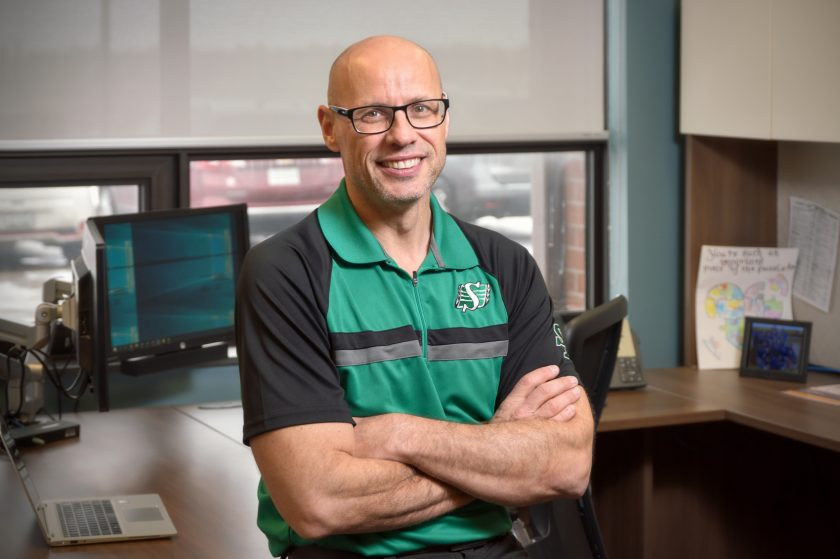 Mike Walter MEd’06 was Lafontaine’s home room and physics teacher at Regina’s Winston Knoll Collegiate. Walter has been delighted to watch Lafontaine’s career flourish, but he is not surprised by his former student’s accomplishments. Photo by Trevor Hopkin
Mike Walter MEd’06 was Lafontaine’s home room and physics teacher. Walter has been delighted to watch Lafontaine’s career flourish, but he is not surprised by his student’s accomplishments.
“It really was a unique story. Alika was two years younger than his classmates, yet he was more mature. He was strong academically and worked hard.”
Walter recalls young Lafontaine as being a well-rounded student — in his school work, music and sports.
“I’m incredibly proud to see how Alika has pursued his medical career and that he advocates for Indigenous health care in our country. He deeply cares about society. He’s positive, caring and dedicated to what he believes in.”
Walter, now deputy director, Instruction and School Operations at the Prairie Valley School Division, taught all five Lafontaine children. He credits Alika’s parents with giving their children a global perspective and strongly supporting their educational pursuits.
“Alika’s story is one of having a number of assets and pushing forward to make a difference,” Walter says.
Mike Walter MEd’06 was Lafontaine’s home room and physics teacher at Regina’s Winston Knoll Collegiate. Walter has been delighted to watch Lafontaine’s career flourish, but he is not surprised by his former student’s accomplishments. Photo by Trevor Hopkin
Mike Walter MEd’06 was Lafontaine’s home room and physics teacher. Walter has been delighted to watch Lafontaine’s career flourish, but he is not surprised by his student’s accomplishments.
“It really was a unique story. Alika was two years younger than his classmates, yet he was more mature. He was strong academically and worked hard.”
Walter recalls young Lafontaine as being a well-rounded student — in his school work, music and sports.
“I’m incredibly proud to see how Alika has pursued his medical career and that he advocates for Indigenous health care in our country. He deeply cares about society. He’s positive, caring and dedicated to what he believes in.”
Walter, now deputy director, Instruction and School Operations at the Prairie Valley School Division, taught all five Lafontaine children. He credits Alika’s parents with giving their children a global perspective and strongly supporting their educational pursuits.
“Alika’s story is one of having a number of assets and pushing forward to make a difference,” Walter says.
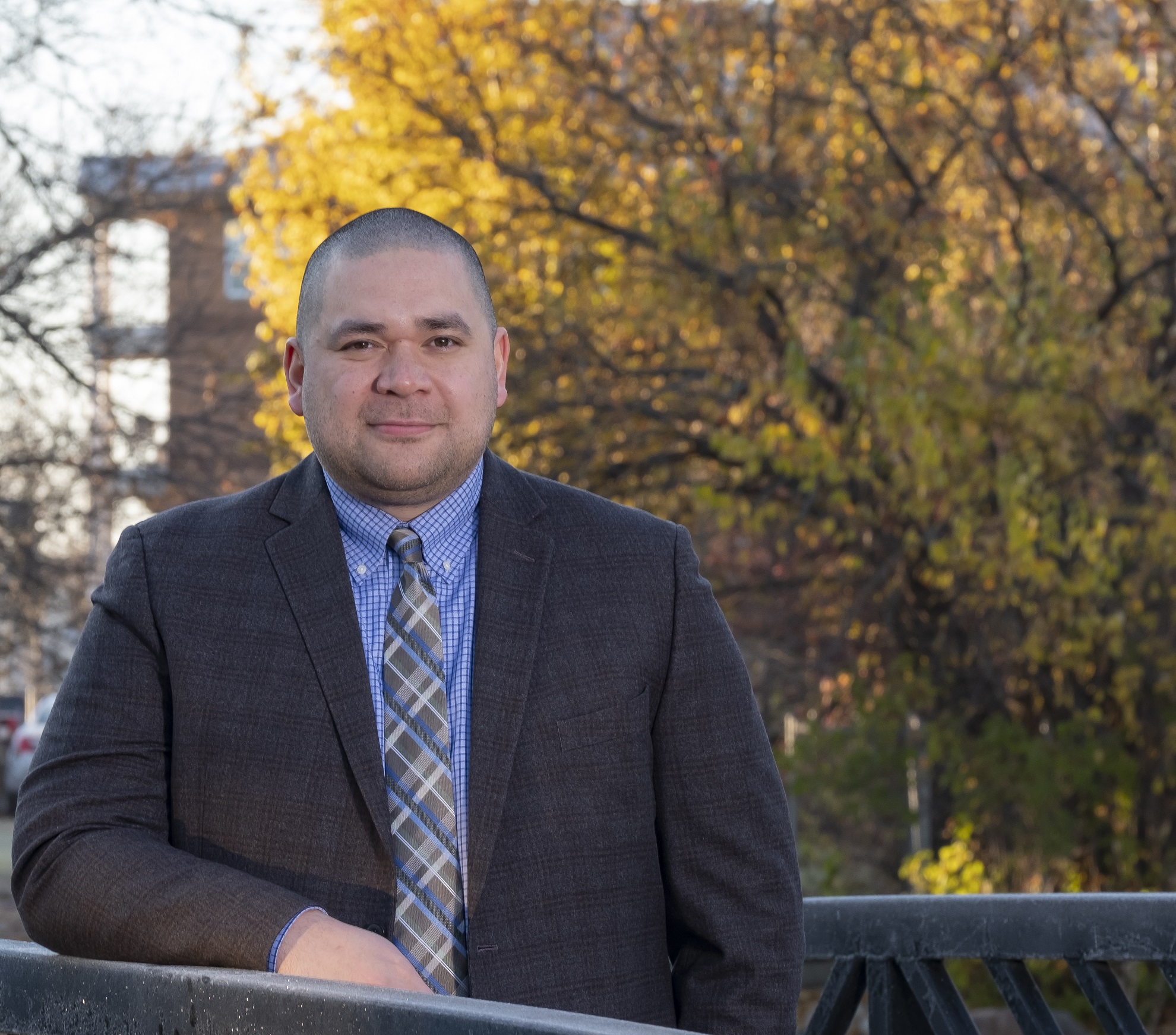 Lafontaine is quick to credit the University of Regina for its role in helping to launch his career. Photo by Randy Vanderveen
At age 16, while studying at the University of Regina, Lafontaine became one of the youngest recipients of a prestigious undergraduate Natural Sciences and Engineering Research Council (NSERC) research grant. He is also the youngest recipient of an Indspire award, which celebrates and encourages excellence in the Indigenous community.
Lafontaine is quick to credit the University of Regina for its role in helping to launch his career. “It was the right place for me to find myself academically,” he says. “Professionally, the building blocks were put in place at the University of Regina.”
Lafontaine recalls vividly the moment that forged his career path into medicine. “There was a professor, Nazih Noureldin — on the first quiz in chemistry, I received a 70. I was sitting at the back of the class. He came to me and said, ‘Is this the best that you can do?’ I asked why? He said, ‘You can do a lot better.’ ”
He recalls Noureldin “volun-telling” him to sit at the front of the class and credits him for providing motivation and increasing his confidence. They would develop a friendship and Lafontaine considers his former professor a lifelong mentor. He says he also thrived with the smaller classes where students got to know each other and professors showed a genuine interest.
Lafontaine is quick to credit the University of Regina for its role in helping to launch his career. Photo by Randy Vanderveen
At age 16, while studying at the University of Regina, Lafontaine became one of the youngest recipients of a prestigious undergraduate Natural Sciences and Engineering Research Council (NSERC) research grant. He is also the youngest recipient of an Indspire award, which celebrates and encourages excellence in the Indigenous community.
Lafontaine is quick to credit the University of Regina for its role in helping to launch his career. “It was the right place for me to find myself academically,” he says. “Professionally, the building blocks were put in place at the University of Regina.”
Lafontaine recalls vividly the moment that forged his career path into medicine. “There was a professor, Nazih Noureldin — on the first quiz in chemistry, I received a 70. I was sitting at the back of the class. He came to me and said, ‘Is this the best that you can do?’ I asked why? He said, ‘You can do a lot better.’ ”
He recalls Noureldin “volun-telling” him to sit at the front of the class and credits him for providing motivation and increasing his confidence. They would develop a friendship and Lafontaine considers his former professor a lifelong mentor. He says he also thrived with the smaller classes where students got to know each other and professors showed a genuine interest.
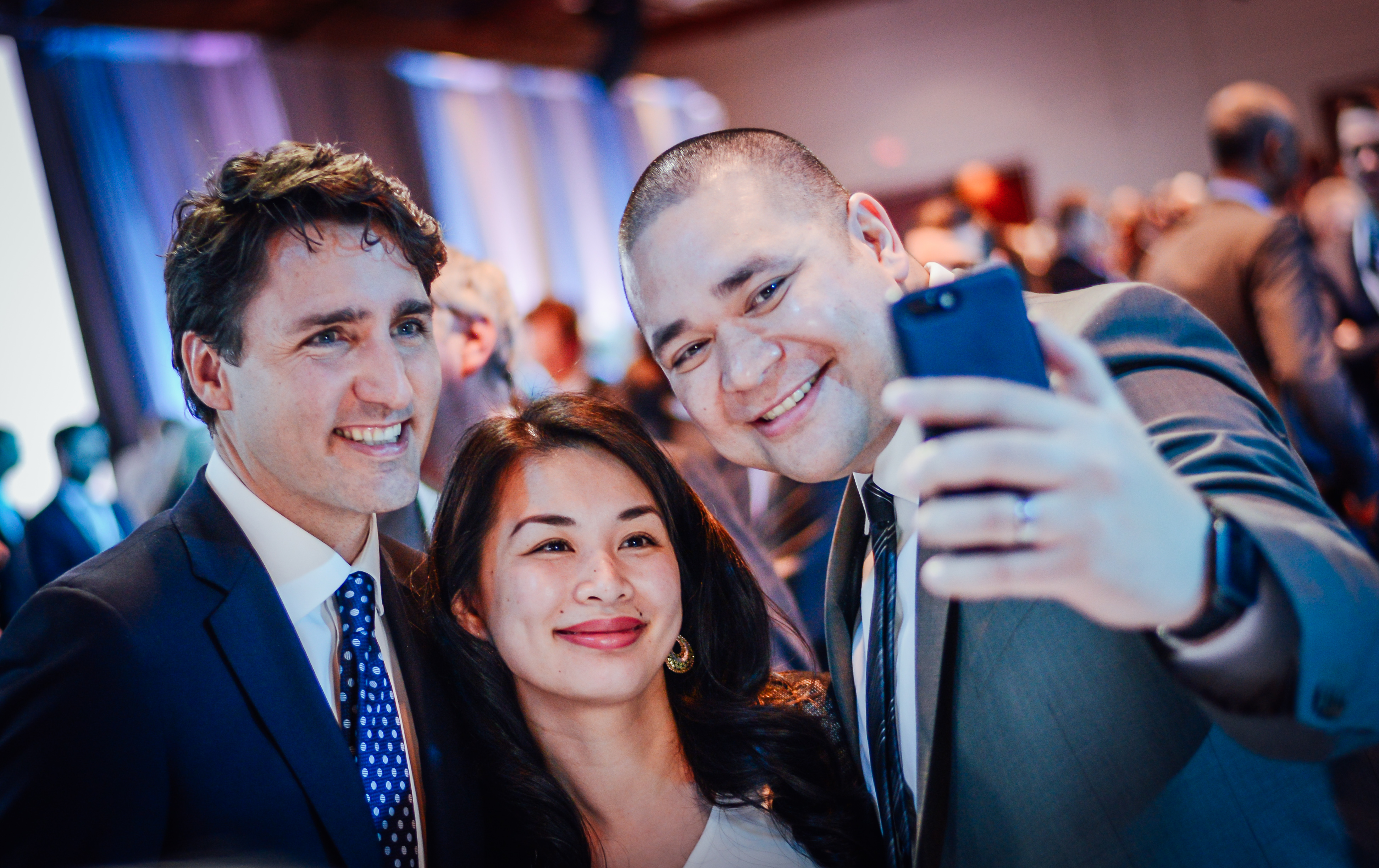 Lafontaine takes a selfie with his wife Thu Uyen and Prime Minister Justin Trudeau at the 2017 Public Policy Forum Testimonial Dinner and Awards. Photo courtesy of the Public Policy Forum
Lafontaine and his wife, Thu Uyen, a dentist, have four children — Meilea, 11, Tiger, 9, Melina, 7, and Kenji, 5. All four children are homeschooled and he takes an active role in their learning.
Despite his boy-band pedigree, these days his musical engagement doesn’t go beyond singing and playing the piano with his kids. Family time also includes biking, hiking, and being a “dance dad.”
Lafontaine takes a selfie with his wife Thu Uyen and Prime Minister Justin Trudeau at the 2017 Public Policy Forum Testimonial Dinner and Awards. Photo courtesy of the Public Policy Forum
Lafontaine and his wife, Thu Uyen, a dentist, have four children — Meilea, 11, Tiger, 9, Melina, 7, and Kenji, 5. All four children are homeschooled and he takes an active role in their learning.
Despite his boy-band pedigree, these days his musical engagement doesn’t go beyond singing and playing the piano with his kids. Family time also includes biking, hiking, and being a “dance dad.”
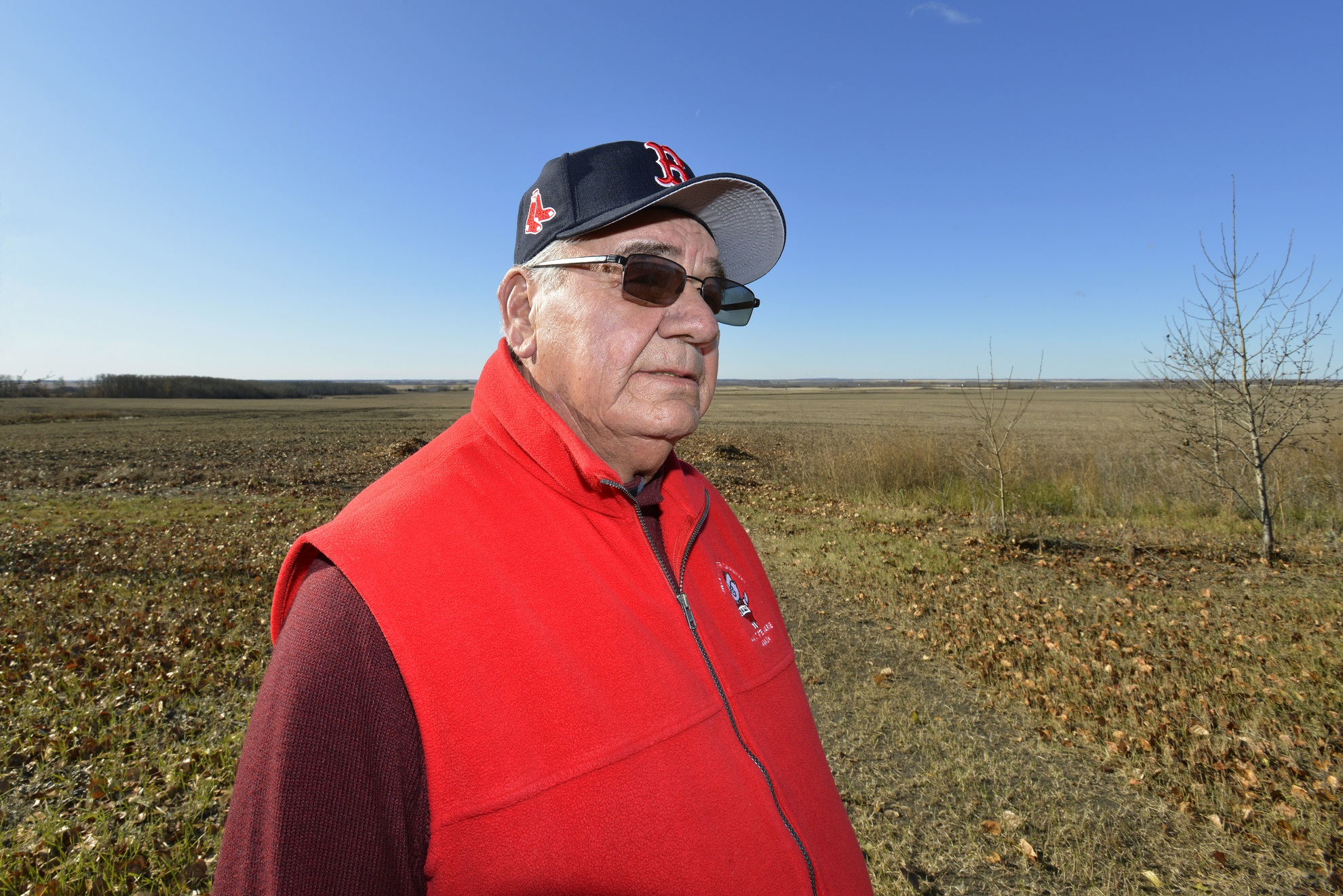 Ted Quewezance served as executive director of the National Residential School Survivors’ Society and spoke publicly about the legacy of Residential Schools at the Truth and Reconciliation Commission proceedings. Photo by Don Hall
Quewezance, who spoke publicly about the legacy of Residential Schools at the Truth and Reconciliation Commission proceeding, and served as executive director of the National Residential School Survivors’ Society, has high praise for Lafontaine.
“I have learned a lot from working with Alika and I am impressed with his commitment to educate and the patience to work towards changing the system. He is a good listener who is able to see two worlds. What makes him a great leader is how he creates space for our voice in his work.”
“Creating change in systems means changing mindsets,” Lafontaine adds. “Patients, especially Indigenous patients, are feeling more and more that they have a voice, and that they can come out and talk and decision-makers will actually listen.”
[post_title] => A mighty voice for Indigenous health care equity
[post_excerpt] => Ted Quewezance can tell you first-hand about the plight his people have faced when it comes to engaging with Canada’s health care-system. The former chief of the Keeseekoose First Nation and Residential School survivor has been a vocal critic of Canada’s health care system and how it favours non-Indigenous Canadians over Indigenous Canadians.
[post_status] => publish
[comment_status] => open
[ping_status] => open
[post_password] =>
[post_name] => a-mighty-voice-for-indigenous-health-care-equity
[to_ping] =>
[pinged] =>
[post_modified] => 2020-02-12 10:07:54
[post_modified_gmt] => 2020-02-12 16:07:54
[post_content_filtered] =>
[post_parent] => 0
[guid] => https://www.degreesmagazine.ca/?p=3471
[menu_order] => 0
[post_type] => post
[post_mime_type] =>
[comment_count] => 0
[filter] => raw
)
WP_Post Object
(
[ID] => 3582
[post_author] => 7
[post_date] => 2019-12-04 15:02:42
[post_date_gmt] => 2019-12-04 21:02:42
[post_content] =>
This year marks the 15th anniversary of the University of Regina's flagship alumni award program - The Alumni Crowning Achievement Awards. The awards were established to celebrate the accomplishments of University of Regina alumni who have realized outstanding achievement in their field. This year's gala was held on October 10 at Regina's Queensbury Centre with 320 alumni and friends gathered for the celebration, the highest attendance in the gala's history. Meet this year's deserving recipients.
[post_title] => 2019 Alumni Crowning Achievement Awards
[post_excerpt] => This year marks the 15th anniversary of the University of Regina’s flagship alumni award program – The Alumni Crowning Achievement Awards. The awards were established to celebrate the accomplishments of University of Regina alumni who have realized outstanding achievement in their field.
[post_status] => publish
[comment_status] => open
[ping_status] => open
[post_password] =>
[post_name] => 2019-alumni-crowning-achievement-awards
[to_ping] =>
[pinged] =>
[post_modified] => 2020-11-26 10:39:03
[post_modified_gmt] => 2020-11-26 16:39:03
[post_content_filtered] =>
[post_parent] => 0
[guid] => https://www.degreesmagazine.ca/?p=3582
[menu_order] => 0
[post_type] => post
[post_mime_type] =>
[comment_count] => 0
[filter] => raw
)
Ted Quewezance served as executive director of the National Residential School Survivors’ Society and spoke publicly about the legacy of Residential Schools at the Truth and Reconciliation Commission proceedings. Photo by Don Hall
Quewezance, who spoke publicly about the legacy of Residential Schools at the Truth and Reconciliation Commission proceeding, and served as executive director of the National Residential School Survivors’ Society, has high praise for Lafontaine.
“I have learned a lot from working with Alika and I am impressed with his commitment to educate and the patience to work towards changing the system. He is a good listener who is able to see two worlds. What makes him a great leader is how he creates space for our voice in his work.”
“Creating change in systems means changing mindsets,” Lafontaine adds. “Patients, especially Indigenous patients, are feeling more and more that they have a voice, and that they can come out and talk and decision-makers will actually listen.”
[post_title] => A mighty voice for Indigenous health care equity
[post_excerpt] => Ted Quewezance can tell you first-hand about the plight his people have faced when it comes to engaging with Canada’s health care-system. The former chief of the Keeseekoose First Nation and Residential School survivor has been a vocal critic of Canada’s health care system and how it favours non-Indigenous Canadians over Indigenous Canadians.
[post_status] => publish
[comment_status] => open
[ping_status] => open
[post_password] =>
[post_name] => a-mighty-voice-for-indigenous-health-care-equity
[to_ping] =>
[pinged] =>
[post_modified] => 2020-02-12 10:07:54
[post_modified_gmt] => 2020-02-12 16:07:54
[post_content_filtered] =>
[post_parent] => 0
[guid] => https://www.degreesmagazine.ca/?p=3471
[menu_order] => 0
[post_type] => post
[post_mime_type] =>
[comment_count] => 0
[filter] => raw
)
WP_Post Object
(
[ID] => 3582
[post_author] => 7
[post_date] => 2019-12-04 15:02:42
[post_date_gmt] => 2019-12-04 21:02:42
[post_content] =>
This year marks the 15th anniversary of the University of Regina's flagship alumni award program - The Alumni Crowning Achievement Awards. The awards were established to celebrate the accomplishments of University of Regina alumni who have realized outstanding achievement in their field. This year's gala was held on October 10 at Regina's Queensbury Centre with 320 alumni and friends gathered for the celebration, the highest attendance in the gala's history. Meet this year's deserving recipients.
[post_title] => 2019 Alumni Crowning Achievement Awards
[post_excerpt] => This year marks the 15th anniversary of the University of Regina’s flagship alumni award program – The Alumni Crowning Achievement Awards. The awards were established to celebrate the accomplishments of University of Regina alumni who have realized outstanding achievement in their field.
[post_status] => publish
[comment_status] => open
[ping_status] => open
[post_password] =>
[post_name] => 2019-alumni-crowning-achievement-awards
[to_ping] =>
[pinged] =>
[post_modified] => 2020-11-26 10:39:03
[post_modified_gmt] => 2020-11-26 16:39:03
[post_content_filtered] =>
[post_parent] => 0
[guid] => https://www.degreesmagazine.ca/?p=3582
[menu_order] => 0
[post_type] => post
[post_mime_type] =>
[comment_count] => 0
[filter] => raw
)